The Noble Duke of York is a great song for practicing 6/8 time, steady beat, and melodic contour in the elementary music classroom. The benefit of this song is that you can use it with a wide range of grade levels with simple adjustments to your lesson.
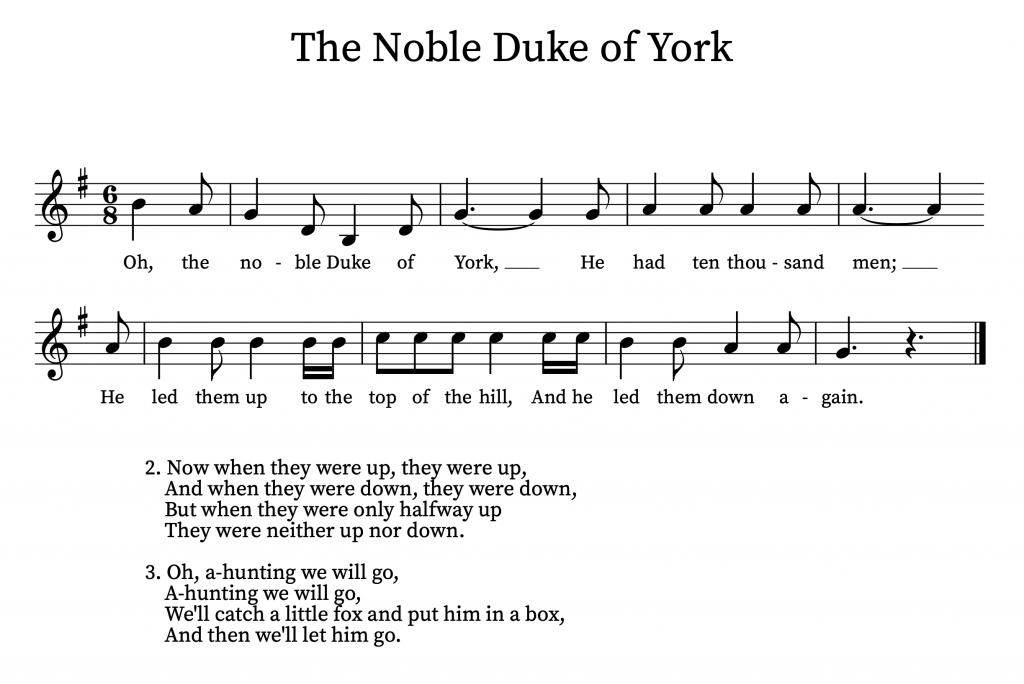
Kindergarten – 1st Grade
- Have the students march to the beat as you sing section A “Oh, the noble Duke of York…”
- For the B section, tell them to stand when they hear the word “up”, sit when they hear the word “down”, and crouch when they hear the words “halfway up”
- Once the students can do all of the motions, encourage them to come up with their own motions for section A
2nd – 3rd Grade
Rob Amchin has a fantastic video for this song on YouTube, and there’s no point in recreating the wheel. His motions are more complex than what I described for K – 1st Grade, so I think it would be ideal for 2nd grade and up. However, keep in mind that he’s using this song as a speech piece, and therefore the musical pitches are never introduced, nor does he use the notated rhythms.
At about the 2:15 mark, you’ll notice he begins introducing rhythm instruments for timbre.
4th Grade and Up
One of the benefits to using a song with multiple grade levels, is that you can trick upper grades into investing in a “kid’s song” assuming that you are upfront and introduce it as that. I did this a few times while teaching when I needed the older grades to practice a concept, but didn’t want to spend extra time learning a whole new (or more complex) song.
To do this, I would explain that I’d like for them to create song motions for my younger students that fit the rhythm of the song. This method had several benefits:
- It immediately made my older students feel more mature/responsible, because they were (in a way) teaching the younger students
- They knew their creations would have an audience, so they were eager to put real effort into it
- They had creative control which is always a bonus
- They were practicing beat and rhythms without realizing it
- They didn’t complain about the song being too childish for them, because they knew the final audience would be the younger grades
Once they’d finished their creations, it was time to write them down so that I could reference what they created during my lessons with the younger grades. What they wrote down depended on what the lesson objective was. If we were reviewing form, then they had to write the lyrics down and organize them into the right sections (A and B)If I was trying to teach specific pitches or melodic contour, then they could use manipulatives or pencil and paper to write them down.
Reading Practice
If your students need practice with navigating a music score, then consider adding in a quick and easy puzzle. These puzzles are especially helpful for students who’re hoping to join a choir that uses sheet music. As music teachers, we forget how foreign the concept of navigating a score is to someone who’s never done it. Putting together a puzzle like the one below, is a tactile way for students to see how the beginning, middle, and end of a song fit together. Click the download button below to grab your own copy.
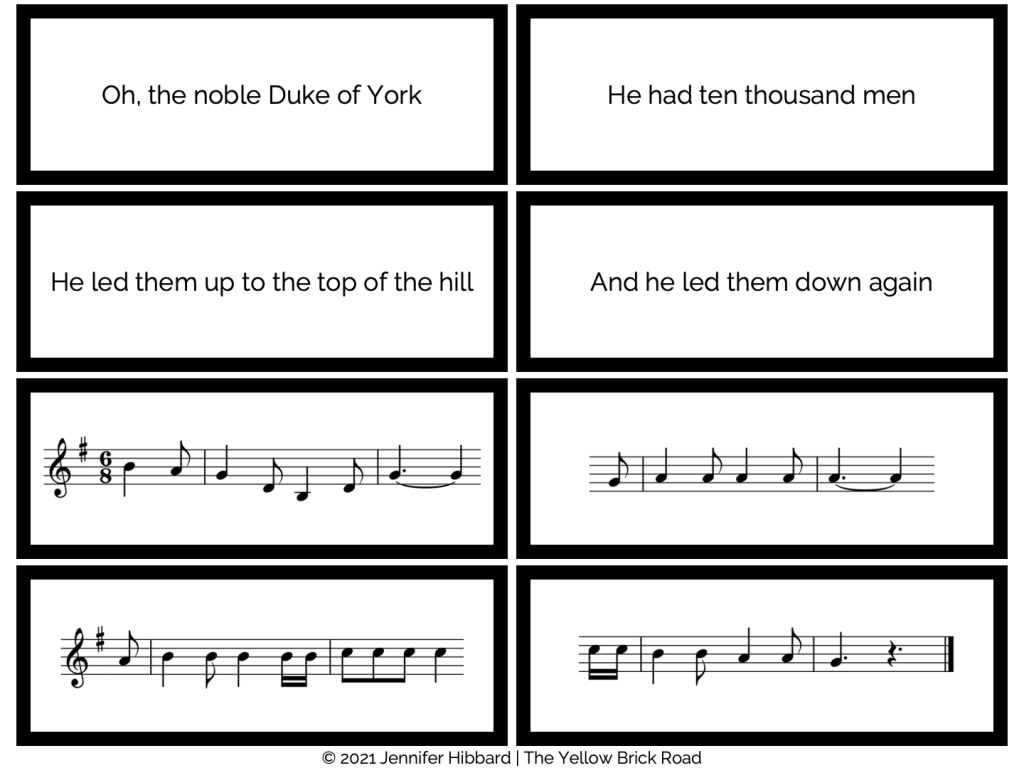
Puzzle Directions
Laminate the puzzle sheet, then cut out each piece. Shuffle the pieces and hand out one puzzle per student (or have them work as pairs if they’re able). They can put the puzzle together in the standard sheet music layout, with the notes on top and lyrics on the bottom.

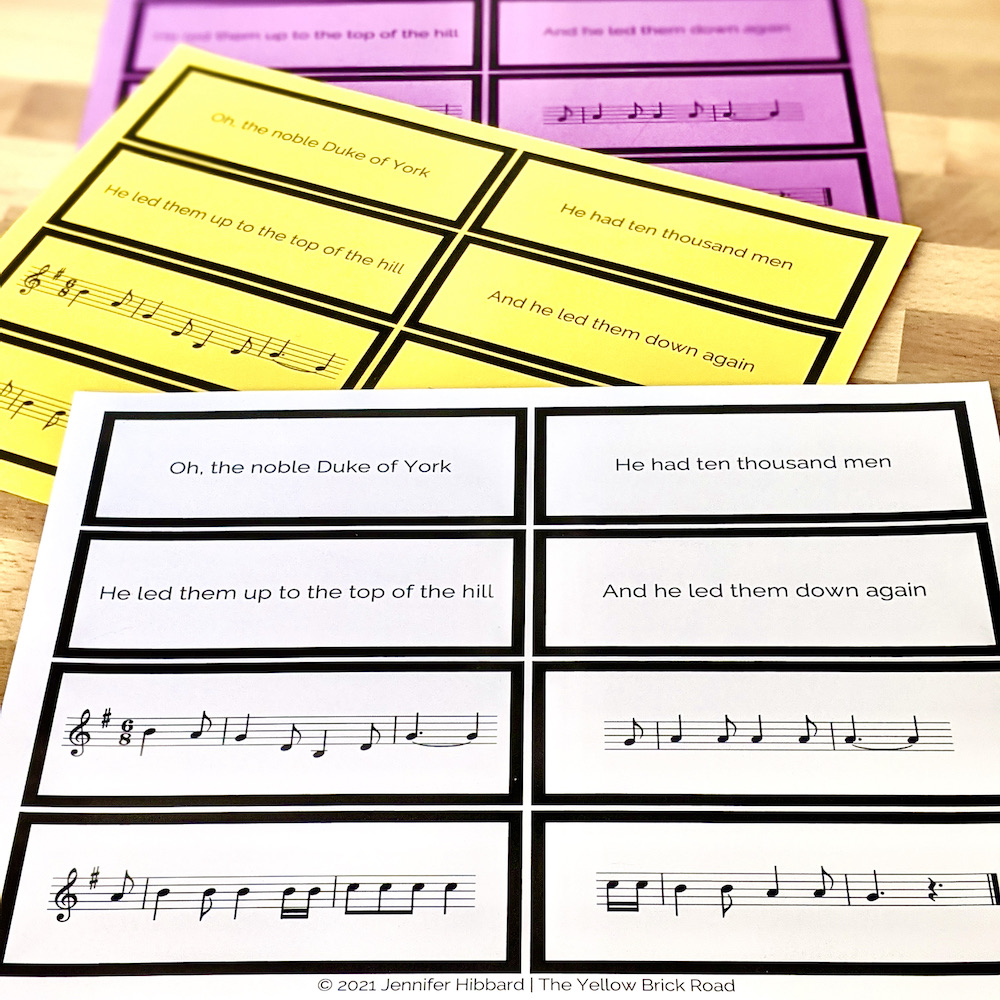

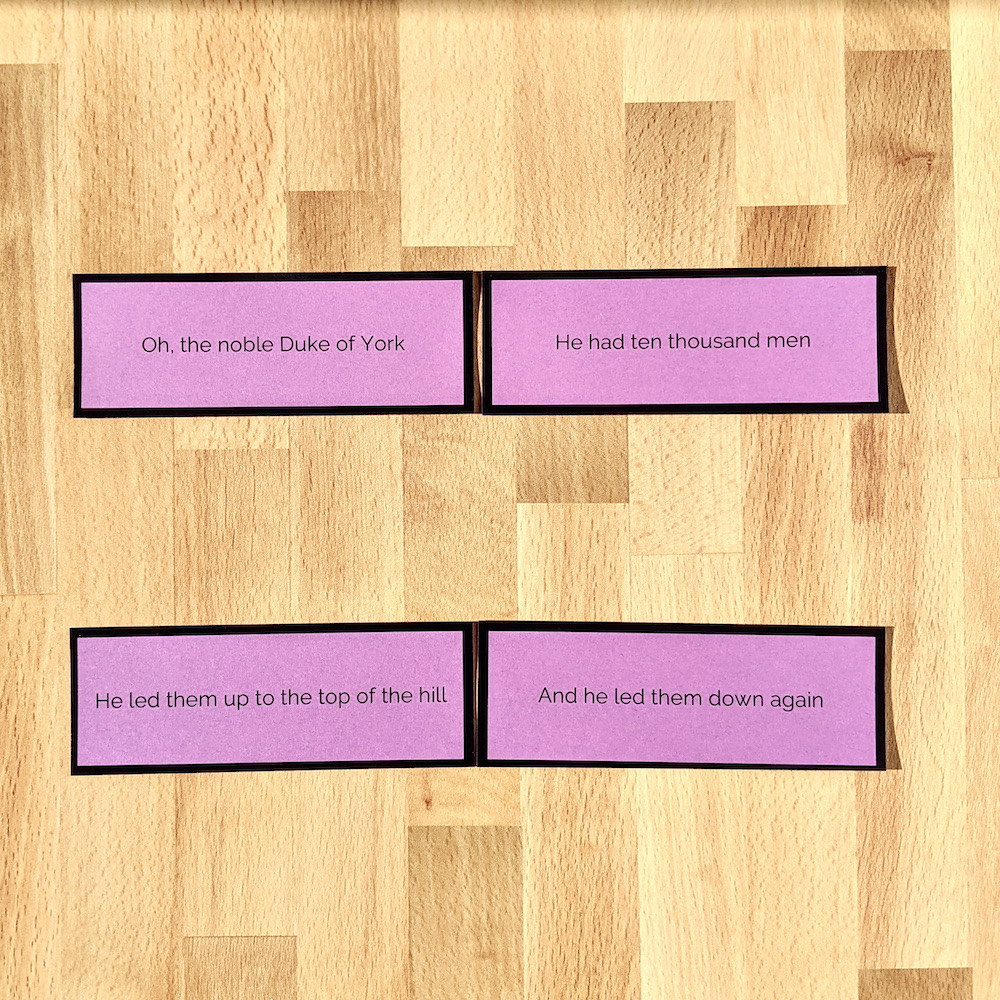
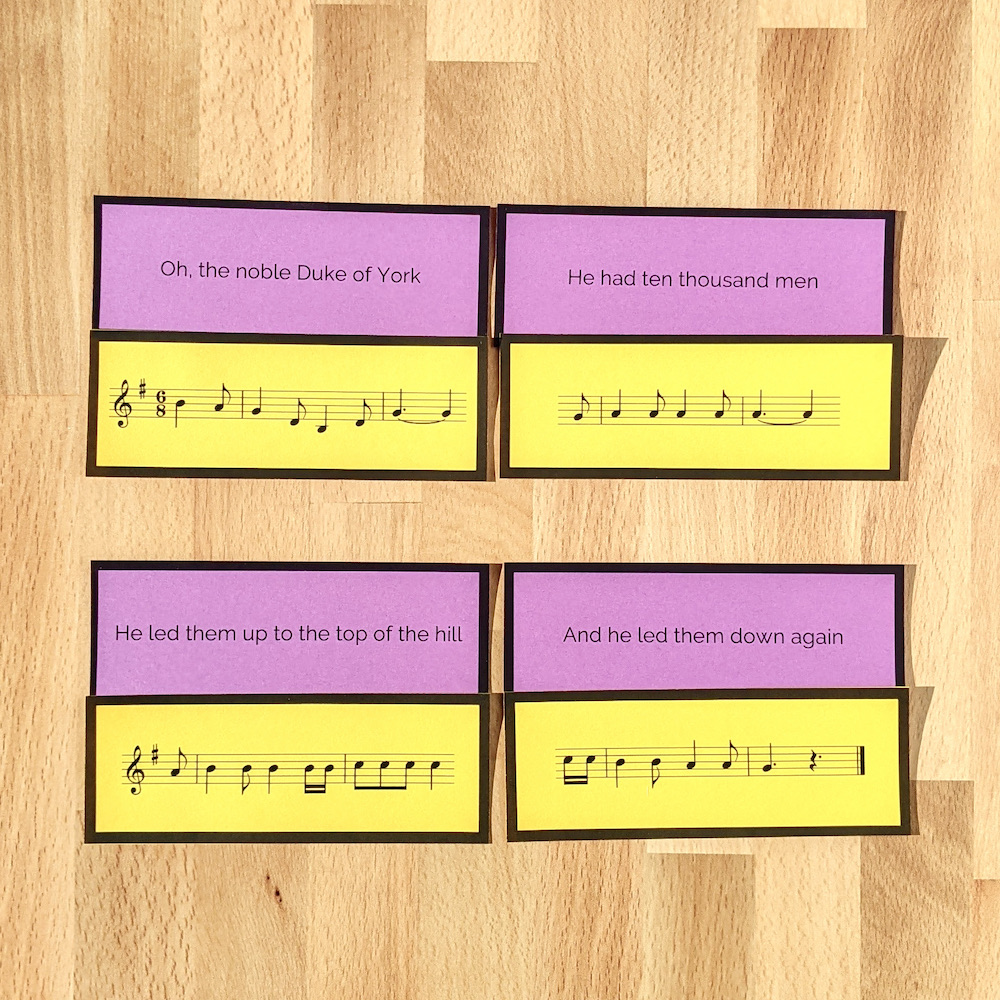
One Response
This is very cool. I want to try it out asap now that I’ve watched the video, although, I just do one on one lessons, it still will be great. Thank you!